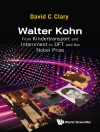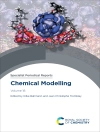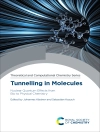X-Ray ?uorescence analysis (XRF) has developed into a well-established multi-elemental analysis technique with a very wide ?eld of practical app- cations, especially those requiring nondestructive analytical methods. Over a long period of time, steady progress of XRF was made, both methodological and instrumental. Within the last decade, however, advancements in te- nology, software development, and methodologies for quanti?cation have p- vided an impetus to XRF research and application, leading to striking new improvements. The recent technological advances, including table-top inst- ments that take advantage of novel low-power micro-focus tubes, novel X-ray optics and detectors, as well as simpli?ed access to synchrotron radiation, have made it possible to extend XRF to low Z elements and to obtain t- and three-dimensional information from a sample on a micrometer-scale. The development of portable and hand-held devices has enabled a more ?exible use of XRF in a variety of new situations, such as archaeometry and process control. Furthermore, synchrotron radiation provides high excitation ?ux and even speciation capabilities due to energetically tunable radiation. Because of these recent advancements, the editors decided to compile a practicalhandbookof XRFasaresourceforscientistsandindustrialusersthat providesenoughinformationtoconceiveandsetupmodern XRFexperiments foruseinawiderangeofpracticalapplications. Additionally, selectedsections consist of a concise summary of background information for readers who wish to gain a more in-depth understanding of the topics without conducting a lengthy search of the literature. The present handbook is not intended to be a textbook with interdependent chapters, rather a reference in which the information in each sectionis largely self-contained.
Tabela de Conteúdo
X-ray tubes.- Radioisotopes.- Synchrotron radiation source.- Mirror optics.- Diffraction optics.- Optics for monochromators.- Focusing diffraction optics.- Refraction X-ray optics.- X-ray detectors and signal processing.- High resolution imaging X-ray CCD spectrometers.- Wavelength dispersive XRF and a comparison with EDS.- Quantitative analysis.- Specimen preparation.- Micro-X-ray fluorescence spectroscopy.- Micro XRF with synchrotron radiation.- TXRF wafer analysis.- Analysis of layers.- Environmental studies.- Geology, mining, metallurgy.- Arts and archaeology.- XRF-application in numismatics.- Analysis for forensic investigations.- X-Ray fluorescence analysis in the life sciences.- Non-invasive identification of chemical compounds by EDXRS.- X-ray safety and protection.- Useful data sources and links.












